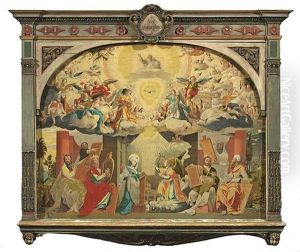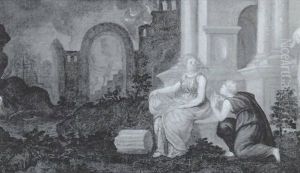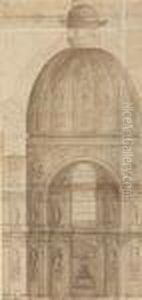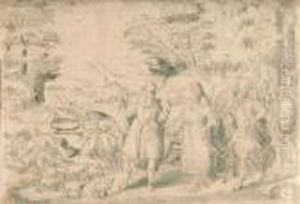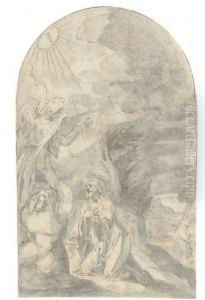Friedrich Sustris Paintings
Friedrich Sustris was a prominent Renaissance artist, architect, and decorator who is best remembered for his work in Southern Germany, particularly in Munich. Sustris was born around 1540 in Padua, Italy, which was then part of the Republic of Venice. His father, Lambert Sustris, was also a painter and likely provided Friedrich with his initial artistic training. The details of his early life and education are not extensively documented, but it is known that Sustris developed a style that combined Italian Renaissance elements with Northern European influences.
Sustris spent a significant part of his career in the service of the Bavarian dukes. He was closely associated with the Wittelsbach court in Munich, where he was appointed as a court painter and architect under Duke William V of Bavaria. During his time at the court, he played a key role in the introduction of Italian Mannerist aesthetics to Germany. His work included the design and decoration of elaborate interiors, like those of the Antiquarium of the Munich Residenz, which is one of the largest and most important Renaissance halls north of the Alps.
In addition to his work at the Munich Residenz, Sustris was involved in the design and decoration of other significant projects such as the expansion of the Trausnitz Castle in Landshut. He was also engaged in ecclesiastical commissions, contributing to the design and ornamentation of several churches. Notably, he worked on St. Michael's Church in Munich, a masterpiece of the early Baroque that was, however, initiated by another architect, William V's court architect, Hans Krumpper.
Sustris' architectural style is characterized by a blend of ornate details and classical elements, reflecting the Mannerist style that was popular in late 16th century Europe. His work is marked by a sense of movement and complexity, as well as a rich use of color and texture. Friedrich Sustris died in 1599 in Munich. While he might not be as widely known as some of his contemporaries, Sustris' contributions to the development of the Renaissance style in Germany have established him as a significant figure in the history of European art and architecture.






